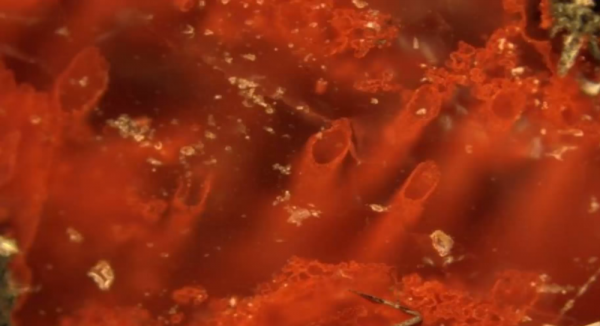By Dane Lorica, | March 03, 2017

The fossilized materials are believed to be 300 million years older than stromatolites
A study suggests that life may have started beneath the ocean as supported by newly discovered tubelike fossils from 3.77 billion-year-old rocks.
The fossilized materials are believed to be 300 million years older than stromatolites, fossilized microbial mats from shallow seas and were considered as the Earth's most ancient mark of life.
Like Us on Facebook
Researchers of the University College London headed by Dominic Papineau said that there is evidence of life from the past in northern Quebec, Canada. They discovered hair-strand-like rocks made of hematite.
Tubes and filaments are commonly associated with bacterial activity at hydrothermal vents on seafloors. The authors wrote, "the tubes and filaments are best explained as remains of iron-metabolising filamentous bacteria, and therefore represent the oldest life forms recognized on Earth."
They also discovered rosettes made of apatite, a mineral associated with microorganism presence. "The microfossils' structures in themselves are almost identical, very similar, to microfossils and micro-organisms we see in similar hydrothermal vent settings today," they said.
Other scientists are skeptical about the new claim. Geomicrobiologist Kurt Konhauser said that "at present, I do not see a way in which we will definitively prove ancient life at 3.8 billion years ago."
These rocks in Isua Greenstone Belt at Greenland are more than 3 billion years in age. However, signs of life in the area are difficult to detect due to exposure to pressure and heat. Geologist Abigail Allwood said that "it's a challenge in rocks that have been this messed up."
"The thing that bothers me most about these structures is the fact that they all seem to be extremely oriented. They are parallel to each other and microbes don't grow parallel to each other," ancient bacteria fossil expert Frances Westall expressed. "But in rocks that have been so altered, like these have been, I think that morphological traces are unlikely to remain," she added.
The study was published in the journal Nature.
-
Use of Coronavirus Pandemic Drones Raises Privacy Concerns: Drones Spread Fear, Local Officials Say

-
Coronavirus Hampers The Delivery Of Lockheed Martin F-35 Stealth Fighters For 2020

-
Instagram Speeds Up Plans to Add Account Memorialization Feature Due to COVID-19 Deaths

-
NASA: Perseverance Plans to Bring 'Mars Rock' to Earth in 2031

-
600 Dead And 3,000 In The Hospital as Iranians Believed Drinking High-Concentrations of Alcohol Can Cure The Coronavirus

-
600 Dead And 3,000 In The Hospital as Iranians Believed Drinking High-Concentrations of Alcohol Can Cure The Coronavirus

-
COVID-19: Doctors, Nurses Use Virtual Reality to Learn New Skills in Treating Coronavirus Patients







